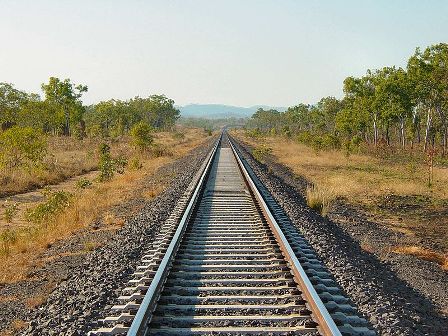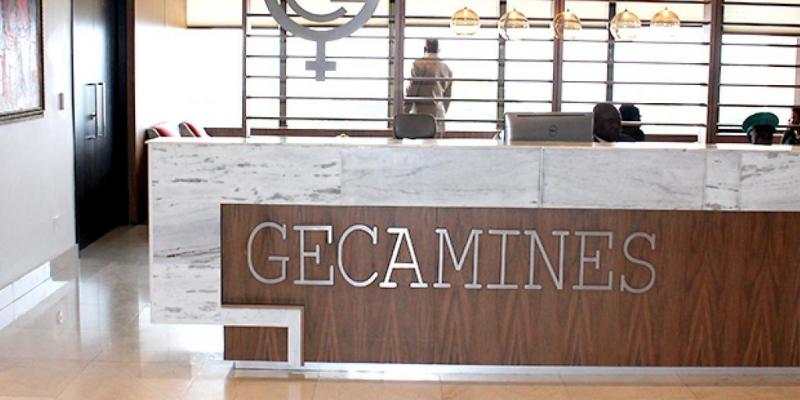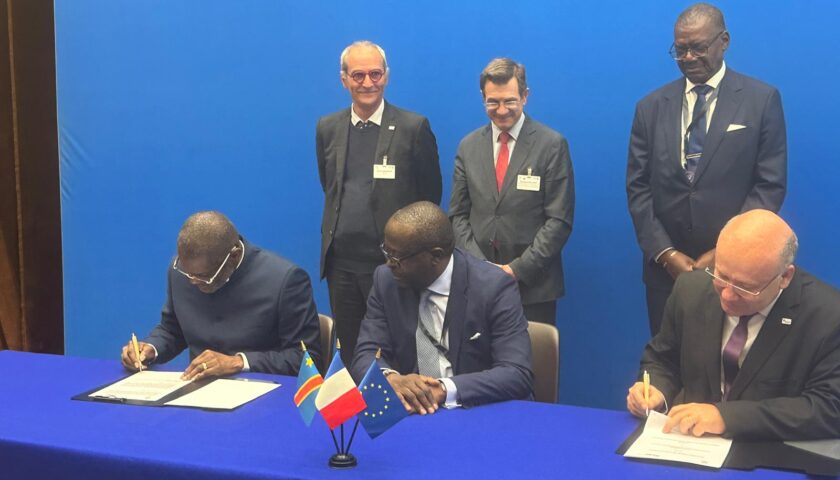The country plans to restart a railway used to bring metal to the port of Lobito from some of the world’s richest copper fields after a four-decade halt due to a civil war.

Railway (Wikipedia Pic)
Author: Colin McClelland
Posted: Friday , 22 Mar 2013
(Bloomberg) –
Angola plans to restart a railway used to bring metal to the Atlantic Ocean port of Lobito from some of the world’s richest copper fields after a four-decade halt due to a civil war.
The line from the port of Lobito will reach the border of Zambia, Africa’s largest copper producer, in August, Luis Lopes Teixeira, technical director of Caminho de Ferro de Benguela E.P., said in an e-mailed response to questions on March 12. Cargo will move along the refurbished 1,344-kilometer (835-mile) line linking Lobito with Luau on the Zambian border. When a branch line inside Zambia is completed in December Lobito will be able to compete with ports in East Africa for copper exports from Zambia and the Democratic Republic of Congo, which together account for about 7.4 percent of world production of the metal, according to the U.S. Geological Service.
“The line will serve, directly or indirectly, a vast region of the interior and east of the country, as well as neighboring countries that don’t benefit from a maritime coastline, such as Zambia, Zimbabwe, Botswana and part of the Democratic Republic of Congo” Teixeira said. “It will have a strong influence on the balance of their economies.”
The route will offer shorter access to European and American markets via the Atlantic and restore Angola’s part of an 84-year-old trans-continental rail network that currently sends some Congolese and Zambian copper, cobalt, manganese and zinc east to Beira in Mozambique and Dar es Salaam in Tanzania. Most of the metal is currently transported to ports by truck.
Barrick, Glencore
Companies that mine copper on the so-called copperbelt that straddles the border between Congo and Zambia include Barrick Gold Corp., Freeport-McMoRan Copper & Gold Inc., Glencore International Plc and First Quantum Minerals Ltd.
Angola has spent about $1.9 billion in mostly oil-backed loans from China to rebuild the railway as it recovers from a 27-year civil war that ended in 2002, according to Jose Manuel Alves de Rocha, an economist at the Catholic University in Luanda.
Trains currently run 1,032 kilometers from Lobito and nearby Benguela to Luena in Angola’s eastern Moxico province, Teixeira said. The final section of 312 kilometers to Luau is under construction by China Railway Construction Corp. Ltd. The Lobito Corridor, as the route is known, will handle 20 million passengers a year and two million tons of goods, he said.
Chinese Locomotives
“Angola has now the opportunity to play an important role in the outflow of the minerals coming from the copper belt region, which would further increase the country’s profile within the Southern Africa Development Community,” Ana Cristina Alves, a senior researcher at the South African Institute of International Affairs, said in an e-mail. “It’s an important landmark for the government.”
The rail company has eight locomotives, 66 passenger cars and 94 cargo wagons, with plans to acquire 40 more locomotives, all from China, Teixeira said. One of the biggest challenges facing the rebuilt line is to compete efficiently with other sub-Saharan railways and ensure adequate maintenance, he said.
Rail lines from the Democratic Republic of Congo, Zambia, Zimbabwe and South Africa are looking at ways to cooperate and increase traffic and trade into the South African port of Durban, Africa’s busiest. State-owned Zambia Railways Ltd. signed a cooperation agreement with Transnet Freight Rail, a unit of South Africa’s Transnet SOC Ltd., on Feb. 20.
The Benguela line will also have to compete with a railway to Tanzania that offers a route to the Asian economies, Alves said.
Civil War
The Benguela Railway was first built under contract from Portugal, Angola’s former colonial ruler, by Sir Robert William’s Benguela Railway Co. to export metal from the provinces of Copperbelt in Zambia and Katanga in the Congo.
Construction, which began in 1903, was halted during World War I and completed in 1929. Service along most of the route was discontinued after the start of Angola’s civil war in 1975 at the end of colonial rule. Trains ran from Benguela to Huambo about 340 kilometers east until 1992. Reconstruction began in 2006 after a $300 million loan from the China International Fund.
“We feel proud, recognizing that it also means more responsibility, as the result of our work is viewed with more attention not only within Angola but in other African countries,” Teixeira said. “It’s important to have an international line.”
–Editor: Karl Maier
To contact the reporter on this story: Colin McClelland in Johannesburg at cmcclelland1@bloomberg.net
To contact the editor responsible for this story: Antony Sguazzin at asguazzin@bloomberg.net
©2013 Bloomberg News




